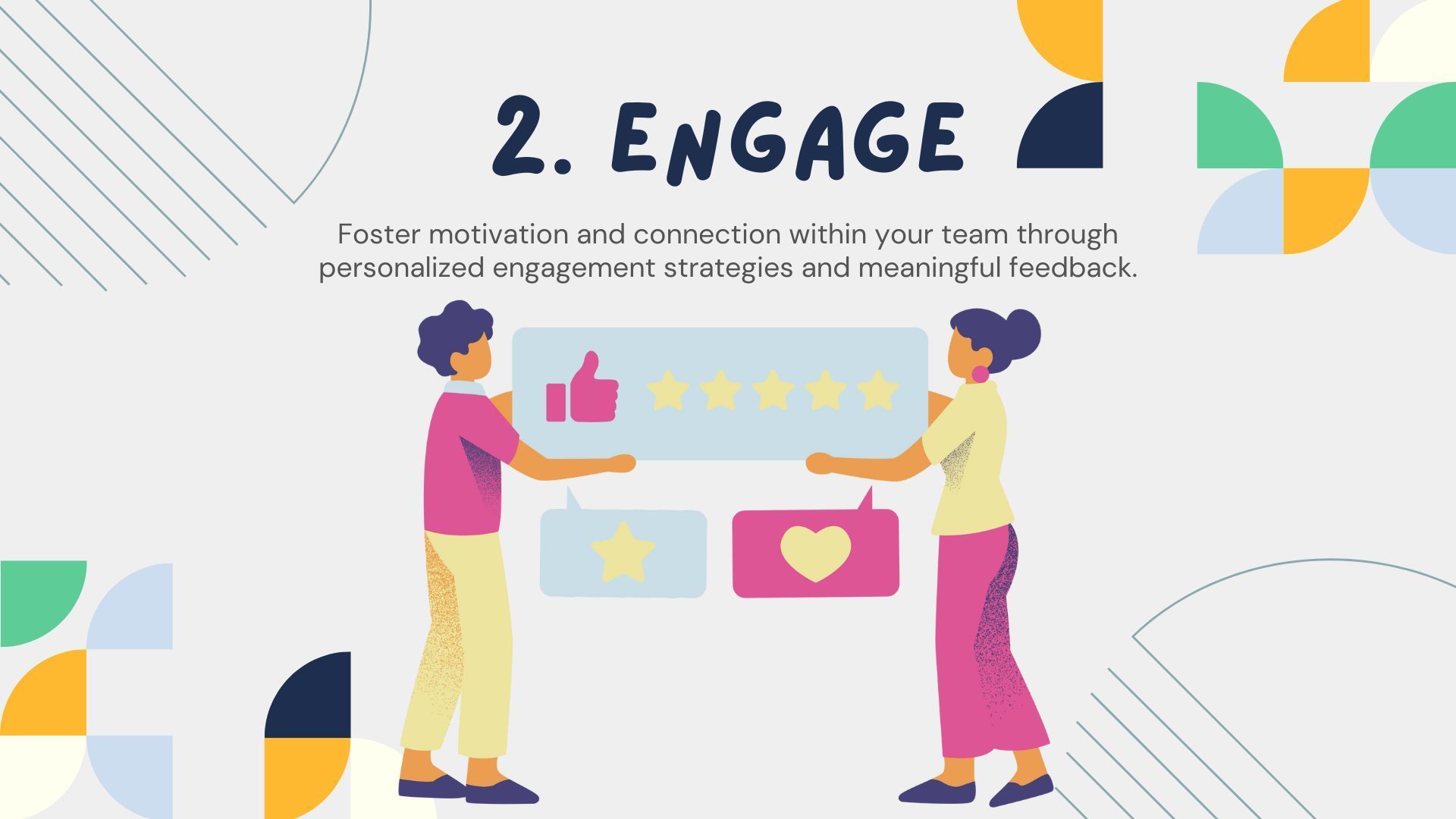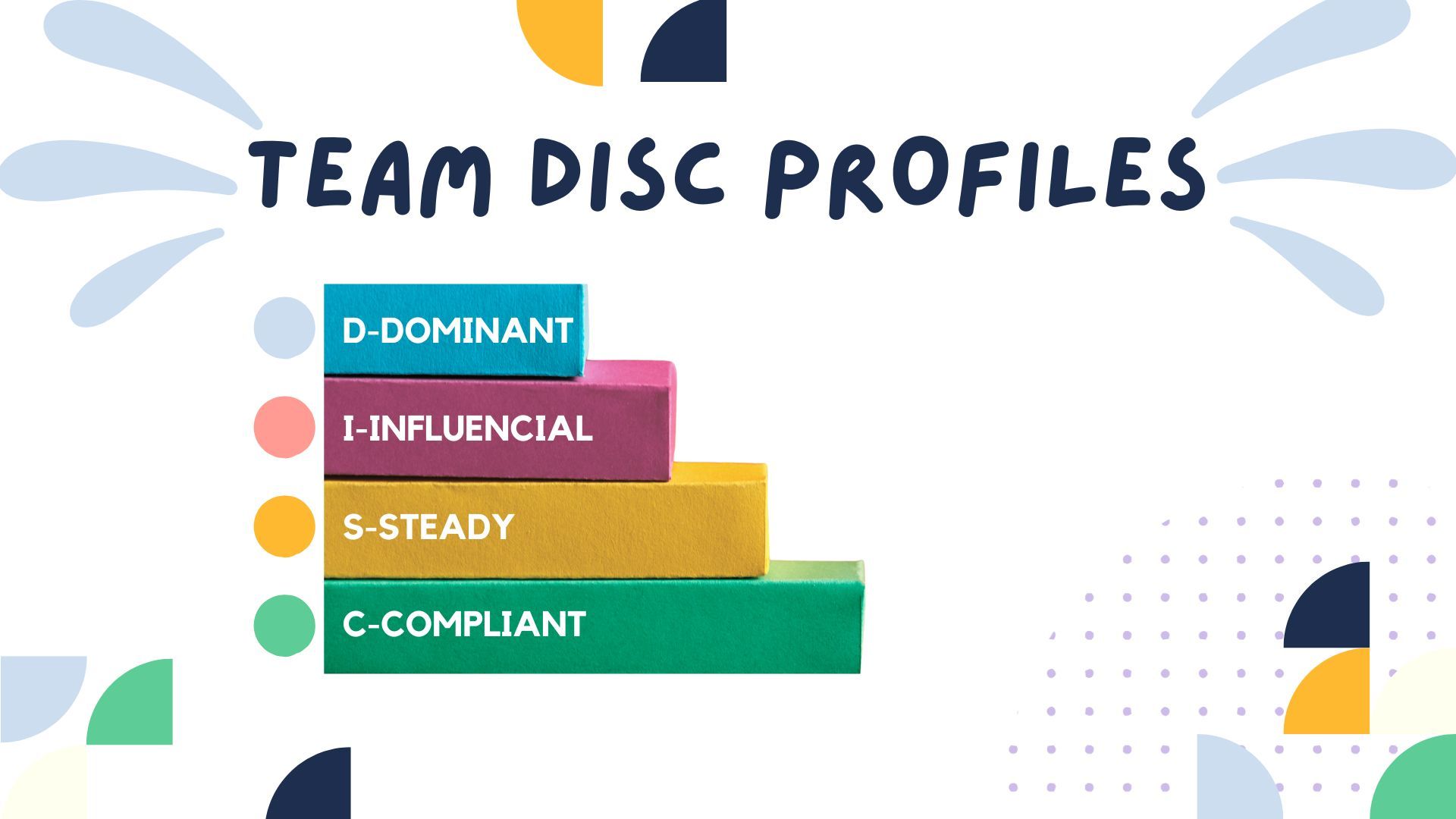Serving Local Businesses in Barrie, Newmarket & GTA. Remote services also available. Try our Leadership Assessment
E5 Leadership Framework - Engage

Engage: The Heartbeat of a High Performing Team
If executing is the foundation for a high-performing team, engagement is the heartbeat that keeps the group alive. Engagement is the energy that individuals bring to the team. A disengaged individual will show up, do what needs to be done, and be gone. A highly engaged individual will be excited about where the company is going and will give above and beyond what is asked of them when contributing to the team. Studies find that engaged individuals also have more innovative and creative behaviors, perform better, and are better equipped to handle high demands and burnout (Kwon & Kim, 2020). In other words, this is a crucial aspect of being a leader, the ability to keep members of the team engaged in the work.
In our previous foundation, we discussed how execution as is pushes engagement. This section discusses the “soft” skills and relational aspects of leadership that develop engagement.
Here are the actions you can do to increase your team’s engagement:
- understand the individuals,
- personalize their roles,
- have meaningful conversations, 4) praise, 5) foster relationships, and 6) allow for professional development. Let’s dive into it.
Get to Know Your Team Members on an Individual Level
I got this idea when I was under the tutelage of the Center for Executive Coaches. Andrew Neithlich teaches that the big mistake of most engagement initiatives is that leaders think of “them” instead of the individuals. For example, giving everyone a gym membership is nice but will not likely increase engagement levels.
Instead, by simply creating a plan for how to engage each team member specifically, it is found that these teams see a 3x greater increase in engagement than other teams who have not implemented this idea (Dai et al., 2021). In my coaching program, our leaders draft a plan for each leadership team member, collaborating with the individuals on how they can best be engaged at a personal level.
One of my favorite ways to do this is to assess the individuals with powerful personality assessments as a document that can aid the conversation around how to engage the individual. There are many good ones: Myer’s Briggs, Birkman, etc. I prefer the Talent Insights developed by TTISI, which combines someone’s behavioral profile (DISC) and what motivates them (12 Drivers).
By doing this, you can co-create a role that best fits someone’s behavioral profile and determine what incentives would best fit their motivators.

Conduct Meaningful Weekly One-On-One Conversations
There are many validated Employee Engagement surveys out there, but my favorite is Gallup’s Q12 survey because it does not measure someone’s attitude but the leadership behavior that causes engagement. One of the best ways to boost engagement is to get to know your team personally and understand their motivations and challenges. T
his means it acts as a prescriptive list of things known to increase engagement. They found that the number one action that increases a worker's engagement is when a leader has a weekly 15-minute meaningful conversation with them. What makes a conversation meaningful?
If we look back at the format of our weekly meetings, you can use any of those: celebrating wins, dreaming ahead, asking about goals, and ensuring clear expectations are set. You can get personal and ask how they are doing outside of work. Go deeper by asking what someone is feeling about any of the above.
Here’s my framework for how to have a deeper conversation with anyone. Imagine a concentric circle with three circles. The outer edge is “what,” the middle circle is “feel,” and the inner circle is “mean.” If you ever want to have a meaningful conversation with someone, simply pivot from what you’re talking about and add, “And how do you feel about that?” as you work through feelings, you can pivot one more time by asking, “what does that mean to you?”
The Power of Praise and Positive Feedback
While we are on the topic of weekly meaningful conversations, why not use this as an opportunity for positive feedback? There are so many benefits to giving regular and frequent positive feedback:
- While we are on the topic of weekly meaningful conversations, why not use this as an opportunity for positive feedback? There are so many benefits to giving regular and frequent positive feedback: Teams that receive regular positive feedback are more motivated, productive team, and committed to their goals (Waltz et al., 2020).
- Positive feedback increases the individual’s sense of competence and relatedness, which maintains high levels of engagement and helps build trust (Wang et al., 2018).
- Positive feedback increases the individual sense of ownership and responsibility for their work, leading to engagement and willingness to go above and beyond their job duties, which is a hallmark of a high-performance team and helps the team thrive. Regular praise also helps motivate team members to maintain their productivity and commitment.
- Not only does it increase or maintain engagement, but it also creates resilience during hard times and helps reduce burnout and disengagement (Chanana, 2020).
Your individualized engagement plan should include what kind of praise would most help the individual. For example, many millennials value a high frequency of meaningful feedback, which leads to higher engagement (Waltz et al., 2020). Some might like public praise; others prefer thank-you notes, so ask when co-creating the engagement plan.

Provide Opportunities for Professional Development
So many times in my entrepreneurial journey, I find that my motivation stalls because my work has stagnated. I read a book or attend a workshop, and suddenly, my mind is racing. There’s a new excitement about how I can apply some of the ideas I just learned. There are many good reasons why you need to make professional development a priority for keeping your team motivated and performing:
- You convey that you value your team members' contributions and are committed to their future (Kwon et al., 2024).
- Your team can help identify learning opportunities that align with their roles and goals.
- It increases their sense of purpose and engagement (Mone et al., 2011).
- It makes people enjoy their jobs better and makes them feel more competent (Morethe et al., 2020)
- Helps the team become more collaborative and innovative (Luthra et al., 2024).
This ties into our previous discussion about goal-setting, too. Remember, one element is to switch the goals to learning goals if they are too complex. In other words, at least annually, review with your members what professional development would excite them, benefit them, and help them do their roles better.
When I worked at a nonprofit, the organization's philosophy was based on the servant leadership model: serve the individual’s needs above those of the organization. One of the ways they signaled this was by providing development opportunities that benefit us even if we were to leave. For example, they provide opportunities for higher education degrees. The risk is that people can take advantage, be highly skilled, and move on. The benefit is people are more committed to the organization, feel a sense of loyalty, and have fresh innovation and skills to bring to the table. How far are you willing to go to show your commitment to the individuals to build a killer, high-performing team?
When you have execution and engagement, you now have things getting done and the individual's drive, which is essential for a good leader. These are the foundational steps for building high-performance teams. In the next portion, we discuss how to steer the whole boat in the right direction.
Implementing the E5 Leadership Framework: Steps to Get Started
This was called a definitive guide, and it can be overwhelming. So, how do you make E5 a reality for your team? I have a diagnostic that has 25 items, 5 for each of the E foundations. I suggest getting an overall score from the diagnostic and seeing how you scored in each of the foundations. When I work with my clients, we start at the beginning and work our way down until each section can be scored at least 80% or above. So the first step is to diagnose, and you can do that right here.
Need help implementing this framework into your team? We have a program just for that, called the Empowered Leadership Intensive.
Reference:
Castellano, S., Chandavimol, K., Khelladi, I., & Orhan, M. A. (2021). Impact of self-leadership and shared leadership on the performance of virtual R&D teams.
Journal of Business Research,
128, 578-586.
Chamakiotis, P., Panteli, N., & Davison, R. M. (2021). Reimagining e-leadership for reconfigured virtual teams due to Covid-19.
International Journal of Information Management,
60, 102381.
Chanana, N., & Sangeeta. (2021). Employee engagement practices during COVID‐19 lockdown.
Journal of Public Affairs, 21(4), e2508-n/a.
https://doi.org/10.1002/pa.2508
Chen, Y. S., Lien, C. M., Lo, W. Y., & Tsay, F. S. (2021). Sustainability of positive psychological status in the workplace: The influence of organizational psychological ownership and psychological capital on police officers’ behavior.
Sustainability,
13(5), 2689.
Dai, Y. D., Altinay, L., Zhuang, W. L., & Chen, K. T. (2021). Work engagement and job burnout? Roles of regulatory foci, supervisors’ organizational embodiment and psychological ownership.
Journal of Hospitality and Tourism Management,
46, 114-122.
Fallman, S. L., Jutengren, G., & Dellve, L. (2019). The impact of restricted decision‐making autonomy on health care managers’ health and work performance.
Journal of Nursing Management, 27(4), 706-714. https://doi.org/10.1111/jonm.12741
Gardner, D. G., Pierce, J. L., & Peng, H. (2021). Social exchange and psychological ownership as complementary pathways from psychological contract fulfillment to organizational citizenship behaviors.
Personnel Review,
50(6), 1479-1494.
Han, Y., & Hong, S. (2019). The impact of accountability on organizational performance in the U.S. federal government: The moderating role of autonomy.
Review of Public Personnel Administration, 39(1), 3-23. https://doi.org/10.1177/0734371X16682816
He, Y., & Oxendine, S. D. (2019). Leading positive change in higher education through appreciative inquiry: A phenomenological exploration of the strategic planning process.
Journal of Higher Education Policy and Management, 41(2), 219-232.
https://doi.org/10.1080/1360080X.2018.1558720
Huh, E., & Lee, E. (2022). Can abusive supervision create positive work engagement? the interactive moderating role of positive causal attribution and workplace friendship.
Management Decision, 60(3), 531-549. https://doi.org/10.1108/MD-10-2020-1356
Kauffeld, S., Lehmann-Willenbrock, N., & Willenbrock, N. (2011). Meetings matter: Effects of team meetings on team and organizational success.
Group Dynamics: Theory, Research, and Practice, 15(1), 24-37.
Kim, W., Han, S. J., & Park, J. (2019). Is the role of work engagement essential to employee performance or ‘Nice to have’? Sustainability, 11(4), 1050.
https://doi.org/10.3390/su11041050
Kwon, K., & Kim, T. (2020). An integrative literature review of employee engagement and innovative behavior: Revisiting the JD-R model.
Human Resource Management Review, 30(2), 100704.
https://doi.org/10.1016/j.hrmr.2019.100704
Lee, M. C. C., Idris, M. A., & Tuckey, M. (2019). Supervisory coaching and performance feedback as mediators of the relationships between leadership styles, work engagement, and turnover intention.
Human Resource Development International, 22(3), 257-282.
https://doi.org/10.1080/13678868.2018.1530170
Locke, E. A., & Latham, G. P. (2019). The development of goal setting theory: A half century retrospective. Motivation Science, 5(2), 93-105. https://doi.org/10.1037/mot0000127
Mone, E., Eisinger, C., Guggenheim, K., Price, B., & Stine, C. (2011). Performance management at the wheel: Driving employee engagement in organizations.
Journal of Business and Psychology, 26(2), 205-212.
https://doi.org/10.1007/s10869-011-9222-9
Roels, G., & Corbett, C. J. (2024). Too many meetings? Scheduling rules for team coordination.
Journal of Operations Management, 74(1), 115-134.
Slåtten, T., Mutonyi, B. R., & Lien, G. (2021). Does organizational vision really matter? an empirical examination of factors related to organizational vision integration among hospital employees.
BMC Health Services Research, 21(1), 483-483.
https://doi.org/10.1186/s12913-021-06503-3
Vafeas, N. (1999). Board meeting frequency and firm performance.
Journal of Financial Economics, 53(1), 113-142.
Waltz, L. A., Muñoz, L., Weber Johnson, H., & Rodriguez, T. (2020). Exploring job satisfaction and workplace engagement in millennial nurses.
Journal of Nursing Management, 28(3), 673-681.
https://doi.org/10.1111/jonm.12981
Wang, N., Zhu, J., Dormann, C., Song, Z., & Bakker, A. B. (2020). The daily motivators: Positive work events, psychological needs satisfaction, and work engagement.
Applied Psychology, 69(2), 508-537. https://doi.org/10.1111/apps.12182
Zhang, Y., Liu, G., Zhang, L., Xu, S., & Cheung, M. W. L. (2021). Psychological ownership: A meta-analysis and comparison of multiple forms of attachment in the workplace.
Journal of Management,
47(3), 745-770.
Questions? Contact Us
We will get back to you as soon as possible.
Please try again later.
All Rights Reserved | HappyHires | Powered by WebXpertz.ca
